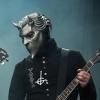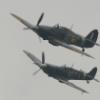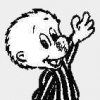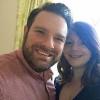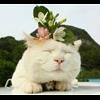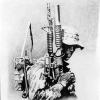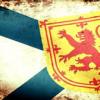Search the Community
Showing results for tags 'P-51'.
-
Resin2detail is to release soon a 1/32nd Cavalier Mustang conversion set for the Tamiya North American P-51D Mustang kit. Sources: https://www.facebook.com/RESIN2detail/posts/616838121840277 https://www.facebook.com/RESIN2detail/posts/616086501915439 https://www.facebook.com/RESIN2detail/posts/616838831840206 https://www.facebook.com/RESIN2detail/posts/617100458480710 V.P.
-
- Cavalier
- Resin2detail
-
(and 1 more)
Tagged with:
-
Hello everybody, here is my try at Hasegawa P-51C. Built almost OOB, with addition of Quickboost exhausts. Painted with Gunze Aluminium and Red, wash is Tamiya, and exhaust stains and dirt a combination of Tamiya smoke and Tamiya D weathering set. Decals are combination of Revell (national insignia, yellow bands and stencils) and Tally Ho. Tally Ho decals acted terribly, resisting every attempt to get them from backing paper. Thanks for looking!
-
With only a few days left until the GB is over, I'm going to attempt an extremely ambitious triple Mustang build taking advantage of the fact that both the Tamiya and the Academy Mustangs are extremely good 'shake and bake' kits that should not cause me much trouble. Here's a summary of the builds and (possible problems) 1) Academy P-51B "Bonnie B II". Taken from the Xtradecal D-Day sheet. Alas, this particular P-51B had the fin fillets which the "Old Crow" boxing does not have. I ordered the P-51C kit that does but has not yet arrived. That still does not stop me from building up everything except the separate tail section. 2) Tamiya P-51D "Detroit Miss". Have always wanted to build this one so here's the chance. 3) Tamiya P-51D "Jumpin' Jacques". I have some old Hasegawa decals but I'm slightly terrified of how thick they'll look on natural metal. I ordered some Mr Setter/Softer from Japan a few weeks ago but waiting for that to arrive. If it does not arrive by early Saturday I will replace it with something else. The "JJ" will be armed with two bombs, rather than drop tanks, hence why I chose the F-51 kit.
-
Good afternoon, just got back from a week of holidays in Paris. Beautiful weather, by the way! And now, time to start with the Mustang. It's the famous kit from Revell, this time with the Malcom hood and decals for two RAF versions in the Dark sea grey/Ocean grey/Dark green scheme. It should be a rather quick build, which I will do along the Airfix Tiffie. They are both the same colours, so I will improve efficiency in painting two aircrafts with one mix of colours. So, don't be alarmed if you spot some parts which don't belong to a Mustang! Just some minor questions, the interiour of the mustang was the usual RAF interior green/grey, correct? Alex
-
Hi all, Since I've finished a build in the MTO GB, I though I could start another. And this time it will be this Sprues are full of flash The kit comes with resin wheel replacements for the dreary looking ones on the sprues Also included are some PE for the interior (mostly). Though I have used some of it on another kit already... And the first problem (already?) I'm not too surprised about the broken canopy (seeing the condition of the box), though I am bummed out. I do have another Smer P-51 kit that contains an intact canopy, but I want to build two P-51's. One USAAF one, from the kit decals, and an RAF one. I'll see if I can get a replacement canopy, or see what it would looks like if I glue this one. Wish me luck. Cheers Jimmy
-
North American P-51D/K/Mk.IV Zoukei-Mura 1/32 History Whilst the earlier versions of the Mustang are well known, it is the P-51D/K with its bubble-top canopy was perhaps the most recognised and most well known version of the P-51 family. It was also the most widely used variant of the Mustang, with a grand total of 8102 machines of this type being produced. One of the problems encountered with the Merlin-powered P-51B/C was the poor view from the cockpit, particular towards the rear. The "Malcolm hood" fitted to the P-51B/C was an early attempt to correct this deficiency. However, a more lasting solution was sought. In January of 1943, Col Mark Bradley had been sent to England, and while there he saw how the newly-invented "bubble" or "teardrop" canopy had given Spitfire and Typhoon pilots unobstructed 360-degree vision. He returned to Wright Field in June, and immediately began exploring the possibility of putting bubble canopies on USAAF fighters. Republic Aviation put a bubble canopy on the P-47D Thunderbolt in record time, and Bradley flew it to Inglewood to show it to James H. Kindelberger, the President and General Manager of North American Aviation. Following discussions with the British and after examination of the clear-blown "teardrop" canopies of later Spitfires and Typhoons, North American Aviation secured an agreement with the Army to test a similar canopy on a Mustang in order to improve the pilot's view from the cockpit. A P-51B was selected to be modified as the test aircraft for the new all-round bubble canopy. The aircraft was redesignated XP-51D. The new bubble-shaped hood gave almost completely unobstructed vision around 360 degrees with virtually no distortion. The large rear section did not reach its point of maximum height until a point well aft of the pilot's head was reached, since wind tunnel testing showed that this shape was found to offer the best combination of viewing angles and minimum aerodynamic drag. The Plexiglas of the hood was mounted in rubber in a metal frame, the sill around the bottom being very deep. This was needed to provide the strength and rigidity required to avoid distortion and to prevent the binding or jamming of the canopy in the fuselage rails while it was being opened and closed. There were three rails, one along each side of the cockpit and one along the upper centreline of the rear fuselage. The canopy was manually opened and closed by a handle crank operated by the pilot. In order to accommodate the new all-round vision hood, the rear fuselage of the Mustang had to be extensively cut down. However, the amount of retooling needed to accomplish this was not extensive, and very little re-stressing of the fuselage structure was necessary. The newly-modified XP-51D took off on its first flight at Inglewood on November 17, 1943, test pilot Bob Chilton at the controls. One of the shortcomings of the P-51B was its limited firepower of only four machine guns. In addition, the guns in each wing were tilted over at quite sharp angles, requiring a sharp kink in the ammunition belt feeds and resulting in frequent gun jams. NAA took the opportunity afforded by the introduction of the new Mustang to correct this problem. The gun installation was completely redesigned, and the result was the installation of three MG53-2 0.50-inch machine guns in each wing, all of them mounted upright and all fed by ammunition belts. The inboard guns each had 400 rpg, and the others each had 270 rpg. However, Mustang users had the options of removing two of the guns and having just four, with 400 rounds each, and some pilots did actually select this option. Another visible change introduced by the P-51D was in the increase of the wing root chord. The main landing gear was strengthened in order to accommodate the additional weight, but the wheels maintained the same diameter of 27 inches. However, the wheel bays and doors were modified and the "kink" in the wing leading edge, barely seen in earlier marks, was made much more pronounced. Four P-51D-1-NA Mustangs had been completed with the original B-type canopy before the first P-51D-5-NA model (company designation NA-109) rolled off the production line. There were previously known problems with the installation of the 85-gallon tank in the rear fuselage of the P-51B and its adverse effects on the directional stability. With the P-51D these problems were exacerbated, due to the fact that the cutting down of the top line of the rear fuselage caused a lot of keel area to be lost. In order to provide for better directional stability, a dorsal fin was added ahead of the rudder during the production run of the P-51D Block 10. Some of the earlier P-51Ds (plus a few P-51Bs) were retrofitted with this dorsal fin. The extra weight and drag caused by this fin was quite small, but it helped a lot in improving the directional stability, especially when the rear fuselage fuel tank was full. The P-51D/K introduced the K-14 computing gyro gunsight, based on a British (Ferranti) design. When it first appeared, it was considered almost miraculous. The pilot needed only to dial in the wingspan of the enemy aircraft he was chasing and then feed in the target range by turning a handgrip on the throttle lever. Once the data had been selected an analogue computer worked. All that the pilot had to do then was to get the wingtips of his target lined up on the bright ring projected on the gunsight, and press the trigger. The K-14 was fitted almost from the start of P-51D production, the P-51K receiving this sight from mid-1944. This sight played a major role in the P-51D's impressive score of aerial victories. The P-51D began to arrive in Europe in quantity in March of 1944. The 55th Fighter Group was the first to get the P-51D, trading in its P-38s for the new bubble-topped fighters. The change from the torqueless twin-engined P-38 to the single-engined P-51 did cause some initial problems, and the lack of directional stability caused by the presence of a full fuselage tank took a lot of getting used to. However, once their pilots became fully adjusted to their new mounts, they found that the P-51D possessed a marked edge in both speed and manoeuvrability over all Luftwaffe piston-engined fighters at altitudes above 20,000 feet. However, Luftwaffe pilots considered the Mustang to be rather vulnerable to cannon fire, particularly the liquid-cooled Merlin engine which could be put out of action by just one hit. The Mustang was the only Allied fighter with sufficient range to accompany bombers on their "shuttle" missions in which landings were made in Russia after deep-penetration targets had been attacked from English bases. The Mustangs also participated in low-altitude strikes on Luftwaffe airfields, a rather dangerous undertaking as these fields were very heavily defended by flak. The Model This is the second P-51D Mustang released by Zoukei-Mura, but only the first this reviewer has actually got his hands on, although having several other ZM releases I am quite familiar with the Super Wing Series concept. The sturdy medium sized, yet deep, top opening box, with a lovely rendition of a British P-51K on the front, is jam packed with styrene. Each of the twelve grey and two clear sprues are individually wrapped in poly bags, with the clear sprues also having foam wrapping around the parts for extra protection. There are three large decal sheets which are supplied in another protective poly bag along with the instruction booklets. It is pretty obvious that the main instruction book is from the first P-51D release as this kit builds up in the same way, but if you are building a P-51K then you will need to refer to the supplementary booklet which is associated to the extra sprue specific to this mark. The medium grey styrene is beautifully moulded, with no sign of flash as is expected these days, but there are a lot of moulding pips, probably due to the nature of the parts design, which does mean there is a little extra cleaning up to do. The details on the parts are very well moulded with restrained panel lines, rivets fasteners on the outer skin, whilst the interior, which is what makes these kits rather special, is quite mind boggling, not just with the finesse of design but with the amount of interior parts provided. That said, there are a couple of noticeable problems, the first is that the wings have definite panel lines which I believe were actually filled to help with the laminar flow of the wing, but an easy fix. The second is the machine gun barrels, which, although quite well protected on the sprue, three or four have a pronounced warp on the review example as the barrel muzzles aren’t connected to the sprue. Of course this is easily overcome with the purchase of the metal barrel set that ZM have also released, but this shouldn’t occur with the sort of technology available these days. The instruction book is beautifully laid out, clear and easy to read, with a preface of aircraft specifications and assembly information, followed by paint colours required and the usual safety information ref tools etc. After the preface pages each major assembly has its own build section. The first page of which provides photos of the completed sub-assemblies, a written guide to what these sub-assemblies are called and in the top right hand corner of each the number of parts used in each assembly. The photos/diagrams all show the colours used to paint each part and how it should look when complete, not accounting for weathering of course. The build itself begins with the engine and what could be termed over the top in relation to the amount of detail provided that will never be seen. Each cylinder block is moulded in two halves with each of the individual cylinders moulded into one half. The completed blocks are then attached to the three piece crank case, followed by the intake manifold and cam covers. To the front of the engine the front and rear portions of the gearbox are joined, with the propeller shaft sitting between and the dual drive unit at front and the whole assembly attached to the engine block. The two piece coolant header tank is then fitted above the gearbox and the four piece ignition harness attached to the top of the engine. The two magnetos, coolant pump and cam shaft drive unit ate assembled and fitted to the rear of the engine, followed by the supercharger unit, which is made up of the two piece supercharger housing for each of the first and second stages, boost control unit, drain valve and aftercooler. The aftercooler pump and ignition harness are fitted to the port side, whilst on the starboard side the ignition harness and oil relief valves are attached. The individual exhaust stacks are then attached along with their respective fairings ensuring that the stack angles are correct. The final stage of the engine assembly is the building up of the firewall, onto which the two piece oil tank is attached, along with the oil line on the front and a couple of black boxes on the rear. The engine bearers are then fitted to each side of the engine then attached to their respective points on the firewall. Lastly the oil line is fitted between the bottom of the oil tank to the pump on the underside of the engine. The next stage concerns the assembly of the cockpit and begins with the fitting of the filler pipe and gauge to the fuselage fuel tank which is then fitted to a support base, then the fuselage floor frame along with a small rear bulkhead. There is a choice of seats, one with seatbelts moulded into it, the other without, depending on whether the modeller intends to add a pilot figure, one of which is available separately. The seat is attached to the rear armoured bulkhead via two supports, whilst the aerial relay box is attached to the rear of the headrest. The radio set and battery are attached to the support framework, to the front of which the heater and ventilation pipes are attached. This assembly is then fitted to the rear of the armoured bulkhead and assembled to the cockpit floor with the battery/radio frame sitting on the fuel tank. There is a choice of instrument panel; one with very nicely detail moulded instruments, which with careful painting should look great, the other is plane as is meant for use with the provided decal. To the underside of the panel the rudder pedal unit and switch box are attached. The side panels are then fitted to the cockpit along with the instrument panel assembly and instrument pipework to the rear of the panel. Moving onto the fuselage interior, the engine assembly is attached to the cockpit assembly. The oil cooler is assembled and fitted to the supporting frame and put to one side. The coolant radiator is then assembled out of the radiator front matrix, rear matrix and sides. The oil cooler, coolant radiator and rear radiator exhaust duct are attached to the underside of the cockpit assembly. The long coolant/oil pipes are then attached to their respective radiators and the inlet/outlet fittings on the engine. The three part carburetor air induction duct is then assembled and fitted beneath the engine attaching to the supercharger intake and the front of the engine. A small oil pipe is then fitted to the starboard side of the oil cooler assembly. It’s only now that the fuselage itself is assembled. Unlike standard kits where the fuselage is split into port and starboard halves, in this kit it is made of up of individual panels and sections. First of all the sides are added, not forgetting to fit the two oxygen bottle to the inside of the starboard side panel. These are followed by the upper fairing and the lower panel which surrounds the radiator/oil cooler duct. The engine cowling is next and the modeller is given a choice of having them fitted or not, and since there is so much detail in the engine it would seem a shame to have it covered up. There doesn’t appear to be an option to have them removable, unlike the Tamiya kit and their magnetic answer. If the cowling is to be fixed permanently closed then there is no need to add the panel supporting framework around the engine, if the engine is to be exposed then these will need to be attached. Also take note to fit the correct intake filter panel for use on the Mk.IV as specified in the supplementary instruction sheet. The separate tail cone, made up of two halves into which the tail wheel bay is assembled from the two sides, roof and forward bulkhead, is now assembled, using either the standard or supplementary parts are necessary. This also goes for the vertical tail unit as the modeller has the choice one with a filet and one without depending on the model being made. Before fitting the fin and rudder the horizontal tailplanes are assembled from upper and lower full span halves and separate elevators. This is then fitted to the top of the tail cone and the fin/rudder unit on top of that. Either of the N-9 or K-14 gunsights are then assembled and fitted to the coaming which has been attached forward of the cockpit. The windscreen is then fitted along with the completed tailcone assembly thus completing the fuselage. Moving onto the wings and once again, like the fuselage, it’s like building the real thing, albeit somewhat simplified. The single piece spar and rib unit is fitted out with the six machine guns, each with their separate ammunition belts, three per side in their gun bays. The two part main fuel tanks are then assembled and fitted inboard of the gun bays before the whole sub-assembly is attached to the single piece lower wing skin part. The three clear identification lights are then fitted to the starboard underside wing tip coloured, probably best, from the inside. The undercarriage bay front bulkhead is attached to the wing by two outer spars and a central longitudinal bulkhead. The hydraulic actuators are then attached, two per side, whilst the retractable landing light is fitted to the port bay. The upper outer wing panels are then fitted, along with the separate leading edge panels inboard of the gun bays, the port leading edge having had the camera gun fitted beforehand. The flaps can be posed either retracted or extended depending on the modellers choice of display. Before the wing can be fitted to the fuselage, the joystick and associated control linkage is attached to the top of the wing and the wing fillets fitted to the mid-lower fuselage. With these in place the wing can be attached. With the kit looking more like a model aircraft the build moves on to the addition of ancillary parts, such as the radiator duct air intake, which comes in three parts and is also fitted with an additional length of pipework before fitting to the fuselage. The oil cooler and radiator outlet doors, which are then attached to the rear of the under fuselage, the radiator door is also fitted with an actuator jack and strengthening bar. The main undercarriage units are each made up of a single piece oleo, separate brake pipe and scissor link. The wheels consist of the brake unit, inner and outer hubs and two halves of each tyre. When assembled they should look rather good, although I would prefer the tyres moulded as a single piece. The completed units are then slid into position and twisted to fit the trunnions into their correct position. The inner doors and actuators are then fitted with the required droop, depending on how long the aircraft has been shut down, whilst the outer doors are fitted to the main oleos. The tail wheel assembly is a simpler affair with the main leg being moulded in a single piece, with the single piece wheel/tyre being fitted to the axle. Once fitted into the tail wheel bay the two bay doors can be attached. Whilst the aircraft could carry a variety of stores and equipment the kit comes with just a pair of drop tanks. Each is split horizontally and when assembled are fitted with the air and fuel pipes and attached to the pylons via two crutch plates. The completed assemblies can then be fitted to their respective hardpoints just outboard of the main undercarriage legs. Final outfitting means more choice for the modeller, dependent on which version or mark they are building. ZM have included three different canopies, (M-1 Inglewood built, K-1 Inglewood built and K-13 Dallas built), each with a separate internal frame and one with an external rear view mirror. There is also an option on which propeller to use as both the cuffed Hamilton Standard and un-cuffed Aeroproducts props are provided, with their respective backplates and spinners. There is also an option to have the radar warning antenna fitted to either side of the vertical fin, so check your references to see if the aircraft you are modelling was fitted with them and open up the holes in the fin halves before gluing them together. The last thing to be fitted are the gun bay doors, either open or closed, the navigation lights, tail light, pitot probe and aerial mast. Decals There are three large decal sheets included with this kit. Each very nicely printed with very little carrier film visible, with the exception of the Southern Cross decals and Star and Bar surrounds which will be covered up anyway. They appear to be in register and nicely opaque which is particularly useful if using the identification stripes on a couple of the paint options. There are stencils for one aircraft and include some cockpit placards and instruction placards for the gun bays. If you include the original kit schemes which are included in this one then the modeller can make one of seven different aircraft. These include:- P-51D-5-NA Ser.No. 44-13837 of the 343rd FS, 55th FG Miss Marilyn II, flown by Capt. Robert Welch P-51D-10-NA, Ser.No. 44-14450, of the 363rd FS, 357th FG, Old Crow, flown by Capt “Bud” Anderson P-51D-25-NA Ser.No. 44-73108, of the 334th FS, 4th FG Red Dog XII flown by Maj. Louis Norley Mustang IVa, Ser.No. KH774, 112Sqn, Royal Air Force Mustang Iva, Ser.No. KH716, 3Sqn, Royal Australian Air Force P-51K-10-NT, Ser.No. 44-12073, of the 348th FS, Sunshine VII P-51D-5NA Ser.No. 44-13410 of the 361st FG, Lou IV There is also a small sheet of masks to aid the painting of the canopy and windscreen. Conclusion If you’ve never come across a Zoukei-Mura Super Wings Kit before then have a look. They can appear to be pretty intimidating until you look at the clever and well thought out break down of parts. I don’t purport that they will be an easy build as there is a lot to do, both in preparation, painting and fitting, but the end result is well worth it. Whilst some don’t see the point of having all the internal structure, and yes it isn’t an exact replica of the real thing, but it gives options for some well detailed dioramas as well as looking interesting if left exposed. I think this kit is one of the most accessible ZM have released as it’s not overly complex and should be ok for the intermediate modeller and above. As with everything, take your time and the results will speak for themselves. With this kit you also get to build a 1:32 Mustang in British or Australian colours which has got to be good. If you want to really go to town on the model then ZM have also released a raft full of aftermarket items from the likes of Eduard and Master Models to enhance the build, although I would have liked to have seen at least an interior etched set or seatbelts included in the standard kit. Oh! And you will need to change the machine gun barrels, particularly if you’re leaving the gun bay doors open. Extremely highly recommended Review sample courtesy of
-
The complete story of the not so quickie Hobby Boss P-51D Mustang build. I started this build because the Academy P-51A was taking longer than I had planned, The delays weren't the models fault but mine, as I spent to much time making little, pointless items more "perfect". So I decided to make a quick build of the HobbyBoss P-51D so that I could be sure that I would get something done for this Mustang Group Build. Picking an easy model and an easy (all metal) paint scheme insured that I could get it done fast, SO fast that my first photos included a clock. The clock was there because I had the hope that with a simple kit and a simple paint job I could get this kit finished in 24 hours. As it turned out I was off a bit on that estimate. With the clock ticking I jumped into the kit. Then I make my first mistake, I chose these decals. In theory, the Carpena decals for the Somali Air Force would be perfect. All done in silver paint (the Somali Mustangs started our as USAAF Mustangs in the Med., post Italy's capitulation they were transferred in a rather weary condition to the Italian AF. After a few years service in the Italian AF they were sold to Somalia. (I suspect that either Italy threw in a free coat of paint with the deal or Somalia painted them silver upon receipt, but I have no proof, I am just guessing on that one). Painted silver (including the spinner) with an Olive Drab nose panel the simple Somali markings would make decaling the model a breeze. Unless, of course, the decals shattered. With great care I got the first two roundels on but the more complex "2" shattered. So I set the model aside looking like this which was pretty advanced for the few hours invested in the build. Now the clock slows down...a lot... Turns out no other airforce makes a a "2" that looks like the Somali "2" or is the same size as the Somali "2". I spent several evenings looking, checking all the decals I have (and I do have a lot of decals) and I found nothing. Finally I admitted that I would need a replacement set of decals and off I went to EvilBay while the clock ticked on my "24 hour" build..... Graced with a little luck (or backed into a corner enough that I couldn't really afford to wait for a bargain) I got a second set and promptly coated them with gloss clear to strengthen the decal. But the Carpena Decals weren't my only decal issue, I had also decided to save painting time by using a solid olive drab decal for the nose. Great idea! Didn't work at all... Sticking in some spots and bubbling up in others I cut and then sand the nose decal off. So I painted the nose after removing the decal, BUT I had decided that leave the exhaust stacks off so they wouldn't get in the way when I masked the nose. They would, or could, have been a good decision had I not made a hamfisted whoops with the glue which spilled into the painted olive drab and dissolved part of it away. More cleaning - More Masking - More Time, and finally my "24 hours" Mustang is done...in 23 DAYS..... Greg in OK
-
Hi! My little 'stang! Kit manufacture: Airfix Scale: 1/72 Type: North American P-51D Mustang Extras used: Scratch seat belts from tape . Paints and colours used: AK Xtreme Metals Aluminium, AK Dark Aluminium, AK Black Base Primer, Tamiya XF-7 flat red, XF-3 flat yellow, XF-85 Rubber black, XF-62 Olive Drab, Vallejo 71.010 Interior Green, various Vallejo colours for hand painting, AK Gauzy Agent, Flory Dark Dirt. So this is another kit I've been working on for another group build/SIG on another forums. It was all about metal finishes, and as I've never really attempted a true NMF, I thought I'd give the new excellent AK Xtreme Metals a go. The kit is a fantastic mojo-buster. Fit is generally excellent, detail is good, engraved panel lines are lovely. The only problems I had were a warped landing gear strut, so the wheel had to be superglued to the undercarriage door, and the antenna was so full of flash it was unusable and had to be scratched from plasticard. I'm fairly pleased with the result of the AK Xtreme Metal and I loved the AK Gauzy agent; self levels a treat and doesn't diminish the metal finish. I did have a problem at times with the AK stuff pealing away with the masking tape despite de-tacking and leaving the paint to dry for a week at a time. However it goes on a treat and looks beautiful. Comments, tips and feedback as always greatly appreciated. And here are my two latest completions hanging out with each other! There we go! Thanks for stopping by. Have a fantastic Christmas everyone, I hope Santa fills your stockings with plenty of kits! Val
- 18 replies
-
- 40
-

-
This is newest MENG model aircraft kit, easy for assemble, have quite nice detail, but also with one weakness-belt is no include, so I built belt by meself. In my opinion, it would be a better chioce than TAMIYA kit.
- 32 replies
-
- 42
-

-
As promised, I am in with this GB. After reviewing my options for the build I chose the Academy P-51 Mustang "North Africa" boxing. It looks like a nice kit and this GB gave me the chance to start one. I do plan to start out slow as I still have a number of kits on my desk, including a CG-4A and a Mc.200 for the Mediterranean GB as well as a Tu-95 for the "Smaller than 1/144" GB over on Hyperscale. I have already begun to putter on this kit though, as I did a few steps on the cockpit this evening. Greg in OK
-
Evening all. As I could not pick which P-51 to do I have decided to do three, a Tamiya, an Airfix and one from Italeri. As they are all in 1/72 it should not be to taxing...probably. The markings will come from these decal sheets although I quite fancy the kit decals from the Italeri for the Royal New Zealand air force. The two top choices are Detroit Miss and Miss Marylin II. Cheers Allan
-
Apart from the Eduard PE seat belts, this was built OOB. This was a build of "firsts" for me: first WWII plane, first propeller plane and first build completed in overall silver. It was painted with Polished Aluminium from AK Interactive's new Xtreme Metal range. It went down rather smoothly and had a great shine over a coat of gloss black. However, it did not adhere well to the kit's surface and several parts rubbed off. After spraying the appropriate areas back with the paint, I sealed the whole model with Mr Color gloss clear. This helped protect the paint thoroughly at the expense of the coating losing a bit of the metallic sheen. I elected to keep weathering to a minimum. What little you see was done with oils and pigments. Hope you enjoy the photos! Mark
- 16 replies
-
- 33
-

-
A glimpse into the Eduard 2017-2018 programme. Sources: http://pwm.org.pl/viewtopic.php?f=14&t=78501&sid=2fed11272508b70cc053fe34bdf286c4&start=645 https://www.facebook.com/photo.php?fbid=1550130735002393&set=gm.1127641523995448&type=3&theater V.P.
-
I know Airfix do a F-51D in Korean markings but I bought this starter set for £4 with free postage from Argos months ago and I'm going to use it instead of buying a new kit I was researching F-51's and came across a few photos of Mustangs in SAAF markings, I really like the Springbok roundels so that's what I'm doing. I'm using a set of MAV decals which give me a ridiculous choice of aircraft to model! I've yet to choose... This is only the second "new tool" Airfix kit I've built and I'm hoping it will be as good as the A-4B I built last year. What a pity... A really good kit let down by out of register decals Good job they're not needed. Because they're being replaced with these.
-
HI friends , this is one of my Reno air-racers, the P-51 D " Miss America", built roundabout 10 years ago. The built was a pleasure. The cockpit was changed to the double seater version, wich I made scratch. Also reduced the wingspan to the race version. I used the decals from the Hasegawa kit. So fly low, go fast, turn left! Andy
- 29 replies
-
- 33
-

-
A model wich I built years ago . The fantastic Tamiya kit combined with the Aires Update set. The Pilot is from Jaguar. Sad but truth. Meanwhile the model does`nt exist anymore... . It crashed during a competion. Status: Out of repairable limit. Scrap!!! So much work ended in seconds... R.I.P. old horse
-
Hey All Today I give you Tamiya's 1/48 Mustang Mk III finished in the markings of 441 "Silver Fox" Squadron, RCAF. The inspiration for this build came after I found what I believe is the only picture of this particular aircraft. Most wartime Mustangs in British and Commonwealth service wore standard RAF Day Fighter Scheme, and as you can just make out in the background, so does at least one other plane in the squadron. This one, HB876, for whatever reason, does not have a speck of paint on the airframe aside from codes and roundels. It does not even sport the usual anti-glare panel present on most bare-metal aircraft. Whatever the reason, it makes for good modelling. The model was completed box stock, with only the addition of an Ultracast resin seat and Hussar resin wheels. She was painted with Vallejo Model Air Aluminium, with Tamiya Titanium Silver for the (steel?) panels around the exhaust. Decals came from a variety of sources with the squadron codes printed by yours truly. The eagle eyed (or even the mole-eyed) among you will notice that the real aircraft has a dorsal fillet, whereas my model does not. For whatever reason, this did not come to my attention until the painting was completed. Consider this an homage as opposed to an honest representation. Anyway, enjoy... Firstly the real HB876 Feedback welcome as always. Regards ANS
- 23 replies
-
- 24
-

-
P-51/F-6 Mustangs Kagero SMI Library No 11 The North American P-51 Mustang has got to be one of the most famous fighters of all time, so there’s no real requirement for me to regurgitate its design milestones and operational career. That is exactly what this book does too, where the design element takes up only a couple of paragraphs. The rest of the narrative contains information about the operations the P-51 carried out along with its lesser known derivative, the F-6 reconnaissance ship when flying with the USAAF within the European Theatre of Operations. This narrative, in both English and Polish takes up only the first seventeen pages, the next sixty five pages is really all about the men who fought their war in these aircraft through period photographs of the pilots and their steeds, some including their ground crew. Each of the photographs are annotated in both languages and contains information about the men, their victories and in some, their unfortunate demise. Where there are no known photos of the men posing next to their machines there are photos of their aircraft, mostly in flight, taking off or landing. The last few pages of this section are in full colour. At the back of the book are several colour side views of eleven aircraft on five pages and back cover. The book is very well printed in portrait orientation with a soft cover and even though the photographs are over 70 years old, because of their posed nature, they are really clear, which allows the modeller to see many of the paint schemes and inscriptions really well. The book comes with a small sheet of what look like 1:32 scales masks, so that the modeller can paint the Stars and Bars, of which there are four on their models rather than use decals, The sheet also includes just the Stars, although I've yet to find where these were used. Conclusion This book isn’t really my normal fare, but once I started to read it and really look at the photographs I didn’t stop until I got to the end. Some of the photographs are quite powerful, some are thought provoking, they are all interesting for one reason or another. The information on the F-6 operations is probably one that hasn’t been told fully, and needs to be explored more, but at least they pilots have got a mention as, with most reconnaissance units, they get very little recognition over the fighter boys. Very highly recommended. Review sample courtesy of
-
Hello all I am building a RAAF 3rd squadron Mustang and I would appreciate suggestion on what red I should use on the spinner, all the referenced I found just say "red" without any more info. Is it dull roundel red? is it a different red? Is it available ready made by in acrylic form? Thanks a lot Paolo
-
Hi, I'm looking for information on "Little Duckfoot" (the B version) but not finding much, and the little bit I found is contradictory. I have decals to build this one However I can only find two photos of the aircraft, one of which looks like it does not have the Malcolm hood like in the color plate I'm basing the build on. Unless I'm mistaken the Malcolm hood canopy slides open backwards whereas the razorback will flip open like in the above photo In the second photo below I cannot see the canopy, however the yellow and red checkered strip on the nose seems to be missing, maybe just the lighting. I can't find any info to indicate which is correct. I'm assuming the photos does not lie, and I can build it as a razorback, but there's other variables I cannot see in the photos like; 1. Does the invasion stripes on the fuselage go all the way around, or only bottom half? 2. Stripes on the wings on top as well, or only bottom? 3. Will the serial number be the same? Maybe there were more than one pre-"D" model Duckfoot, as the font of the name is also not the same in the photos. I believe the color plate comes from this site: http://wp.scn.ru/en/ww2/f/165/3/2 (bottom of page) Though I do not know how reliable the source is. Does anyone know more than this? It will be much appreciated. J
- 10 replies
-
New in the Arsenal Model Group (AMG) Facebook. Two North American P-51 (B/C & D) Mustang kits announced as limited editions. Origin? Rebox? ref.48501 - North American P-51D Mustang Source: https://www. facebook.com/amgmodels/photos/pcb.1769355343290853/1769355239957530/?type=1 ref.48502 - North American P-51C Mustang III Source: https://www. facebook.com/amgmodels/photos/pcb.1769355343290853/1769355253290862/?type=1 V.P.
- 8 replies
-
- 1/48
- North American
-
(and 7 more)
Tagged with:
-
Hey all Carrying on the theme of my last post, I present another 1/48 Tamiya Mustang. This time, a P-51D from 402 "City of Winnipeg" Squadron. Like my Mk.III Mustang, this one was completed out of box with only the addition of Hussar wheels and an Ultracast seat. I cannot recommend Ultracast products enough, well cast, well detailed, well priced. and made in Canada. She was painted with Tamiya Titanium Silver as I find this a good representation of the Aluminium Lacquer finish RCAF Mustangs wore later in their service life. Decals came from Leading Edge Models' "RCAF P-51D Part 2: Eastern & MB" decal sheet, this includes enough markings and stencils for FOUR complete airframes! If you have plans to make an RCAF Mustang, Leading Edge is as far as I know, the only game in town. These aircraft were well maintained, so I restricted weathering to a simple panel wash with MIG Neutral Wash. This is a nice medium grey-ish colour which works well on very light and relatively dark colours. Enjoy... In the immediate post-war period the RCAF acquired 100 P-51Ds from American stocks to equip two regular and ten auxiliary squadrons. The Mustangs in regular squadron service were replaced by Vampires and Sabres in 1949-50, but the auxiliary squadrons soldiered on until 1956 when they too were replaced. Most of the airframes were sold on the civilian market, which means that your favourite air show war bird might very well be an ex-RCAF aircraft. The RCAF Mustangs were virtually identical to the rest of the herd. The only noticeable difference besides the direction finder transponder (the black thing on the rear fuselage), was in the cockpit. Canadian Mustangs were modified with a gun selector switch which allowed the selection of either two, four or six guns for firing. This was, I believe, mostly for ammunition conservation when conducting gunnery training. They could also be fitted with bomb racks on the wing hardpoints which could carry six or eight concrete practice bombs. For the history of this particular aircraft, I'll paraphrase the decal instructions: "9258" P-51D-30-NA USAF 44-74865 Feb.1951 received at RCAF Station Uplands from Texas Engineering Co. Dec.1951-Nov.1952 posted to Training Command at RCAF Trenton Nov. 1952 Sent to MacDonald Bros. for modification and overhaul Served in 402 City of Winnipeg Sqn. from Nov. 1953 until Sept. 1956 when placed in storage. Sold at auction in May 1959 This particular aircraft now flies with the civilian registration N8677E as "Sweet Mary Lou" of the 357th FG Thanks for looking and for the feedback on my previous build. Regards ANS
-
I am busy doing the Tamiya 1/48 P-51 D. Instructions say paint cover behind seat black (the one with the batteries on top) I have seen picture with it painted the same internal green as the seat. However Modelling the P-51 in 1/32 also shows it as black Thoughts please? Thanks
-
Hello everyone! I am presenting you the model of Colonel Thomas Christian's aircraft, named LOU IV, wich was finished 3 years ago. The model was made out of the box with some sratchbuilt. I removed dorsal fin fillet and add a few details in the cockpit. The back mirror, machine guns in the wings, details on the additional fuel tanks, antennas and position lights were scratchbuilt aswell. I painted the model according to the references I found on the internet: - Aircrew Remembrance Society - Tom Cleaver P-51 D (LOU IV) Used colors: -Humbrol HB1 Dark Green - Model Master Aluminum metalizer - Model Master Olive Drab FS34087 Decals are Aero Master, wich are a bit incorrect, the writing E2-C is 1,5mm too short according to the height. The writing with names of mechanics on the left side of the windshield are also missing. Photos of the finished model: Comparison of the model and the reference photos of the real aircraft: More photos and the WIP can be found here: http://eberlemodel.blogspot.com/search/label/Mustang Regards, Aleš.
- 14 replies
-
- 11
-




